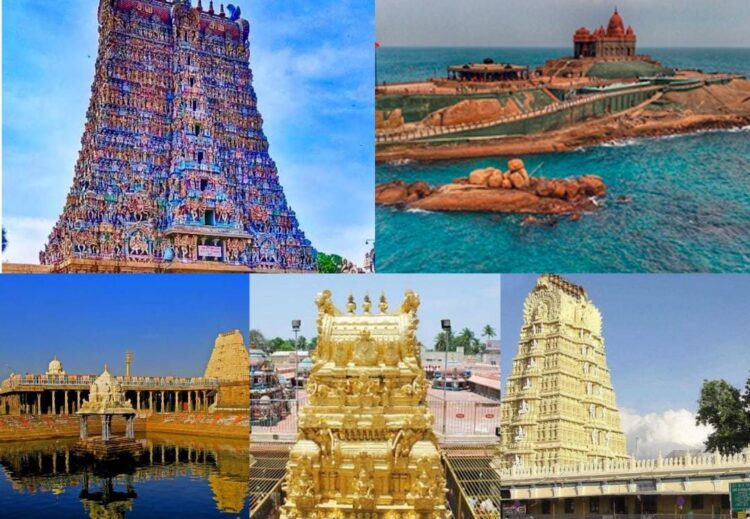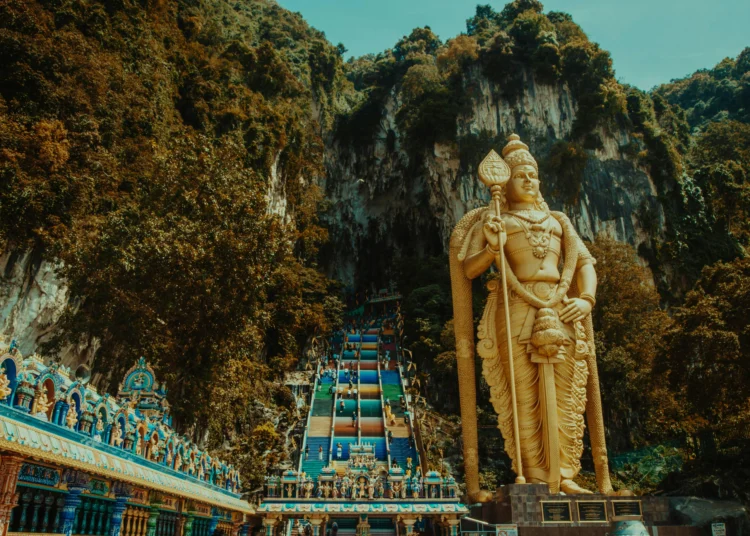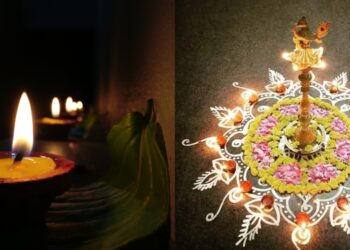In the resplendent tapestry of sacred architecture, Hindu temples especially in India, stand as awe-inspiring marvels, encapsulating millennia of profound spiritual wisdom and artistic brilliance. There are many Hindu temples in India. These sanctuaries of divine connection rise majestically, their spires reaching towards the heavens in a harmonious symphony of celestial communication.
Adorned with intricate carvings, each facade becomes a masterful canvas, narrating epic tales of gods and goddesses, mythic battles, and celestial realms. These ornate reliefs, meticulously chiseled by skilled artisans, breathe life into stone, transcending mere mortals to immerse in the timeless saga of the cosmos.
Within the heart of the temple, the sacred sanctum stands, a sanctified abode where the cosmic energies converge, and the deity’s divine presence resides. The sanctum, often veiled in mystery and seclusion, emanates an aura of profound serenity, beckoning devotees to offer their deepest reverence and devotion. This is why most of the Malaysians
In a grand procession of festivity, elaborate celebrations and religious festivals bestow the temple with a celestial exuberance. Devotees adorned in vibrant attire and dazzling jewelry gather in jubilation, fervently participating in age-old customs and traditions, magnifying the temple’s sanctified aura. In that case, Amman temples in India are always auspicious during Aadi month. Here are five famous Amman temples in India.
1. Madurai Meenakshi Amman Temple
The Meenakshi Amman Temple, also known as the Minakshi-Sundareshwara Temple, is one of India’s oldest and most significant temples. The temple, which is located in Madurai, has significant mythical and historical significance. It is one of the largest and most well-known temples in India and is dedicated to Goddess Meenakshi, an incarnation of the Hindu goddess Parvati, and her consort Lord Sundareswarar, an incarnation of Lord Shiva.
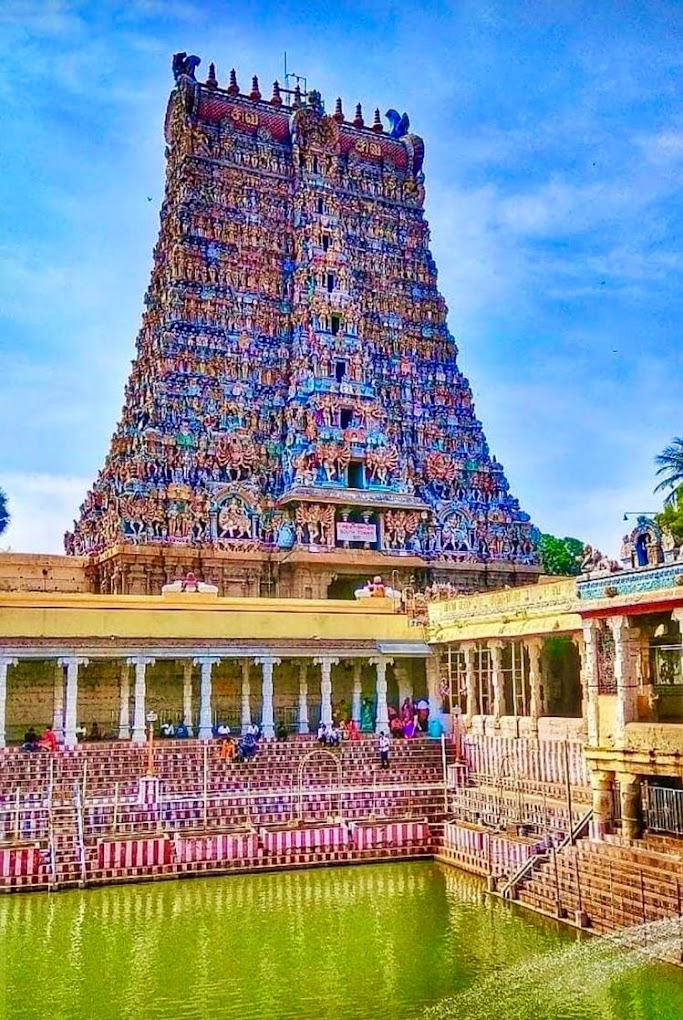
Scholars believe Meenakshi Temple is as old as the city itself, dating back to the first century C.E. It is stated that Kulashekarar Pandyan, a monarch of the Pandyan dynasty, constructed the temple based on directions provided to him by Lord Shiva in a dream. A few religious manuscripts from the first to fourth centuries C.E. mention the temple and identify it as the central structure of the city.
The temple has a sacred pond called “Porthamarai Kulam” or the Golden Lotus Pond. It is believed that Lord Shiva appeared as a suitor to Goddess Meenakshi at this pond before their divine wedding. Lord Shiva blessed this pond and declared that no marine life would grow in it. In the Tamil folklore, the pond is believed to be an evaluator for reviewing the worth of any new literature.

The temple complex includes a famous hall known as “Aayiram Kaal Mandapam” or the Hall of a Thousand Pillars. It is a marvel of architecture, with intricately carved pillars that create a stunning visual spectacle. This is a must visit temple among the Amman temples in India.
2. Sri Kanchi Kamakshi Temple, Kanchipuram
The Kanchi Kamakshi Temple is a renowned Hindu temple dedicated to the goddess Kamakshi, located in the ancient city of Kanchipuram in the Indian state of Tamil Nadu. Kanchipuram, also known as Kanchi. Kamakshi who is also an incarnation of Goddess Parvati is revered as the Divine Mother and the goddess of love, fertility, and compassion. The Kanchi Kamakshi Temple is a splendid architecture, characterized by its intricate carvings, towering gopuram, and large pillared halls. The temple’s architecture reflects the rich artistic and cultural heritage of the region.

The presiding deity, Goddess Kamakshi, is depicted in a seated posture in the sanctum sanctorum. She is adorned with a golden crown, nose ring, and other traditional ornaments, symbolizing her divinity and grace. At Kamakshi Amman Temple, every day is a festival. Four worship services are part of the daily practises.
However, the month of ‘Maasi’ hosts an annual temple festival. Processions in a silver chariot are held on the 7th day of this month. Festivals such as Navrathri, Aadi, Aippasi Pooram, Sankara Jayanthi, and Vasanta Utsavam in Vaikasi are also widely observed. Fridays in the months of ‘Adi’ and ‘Thai’, like other temples in Tamil Nadu, are celebrated with spectacular ceremonies.
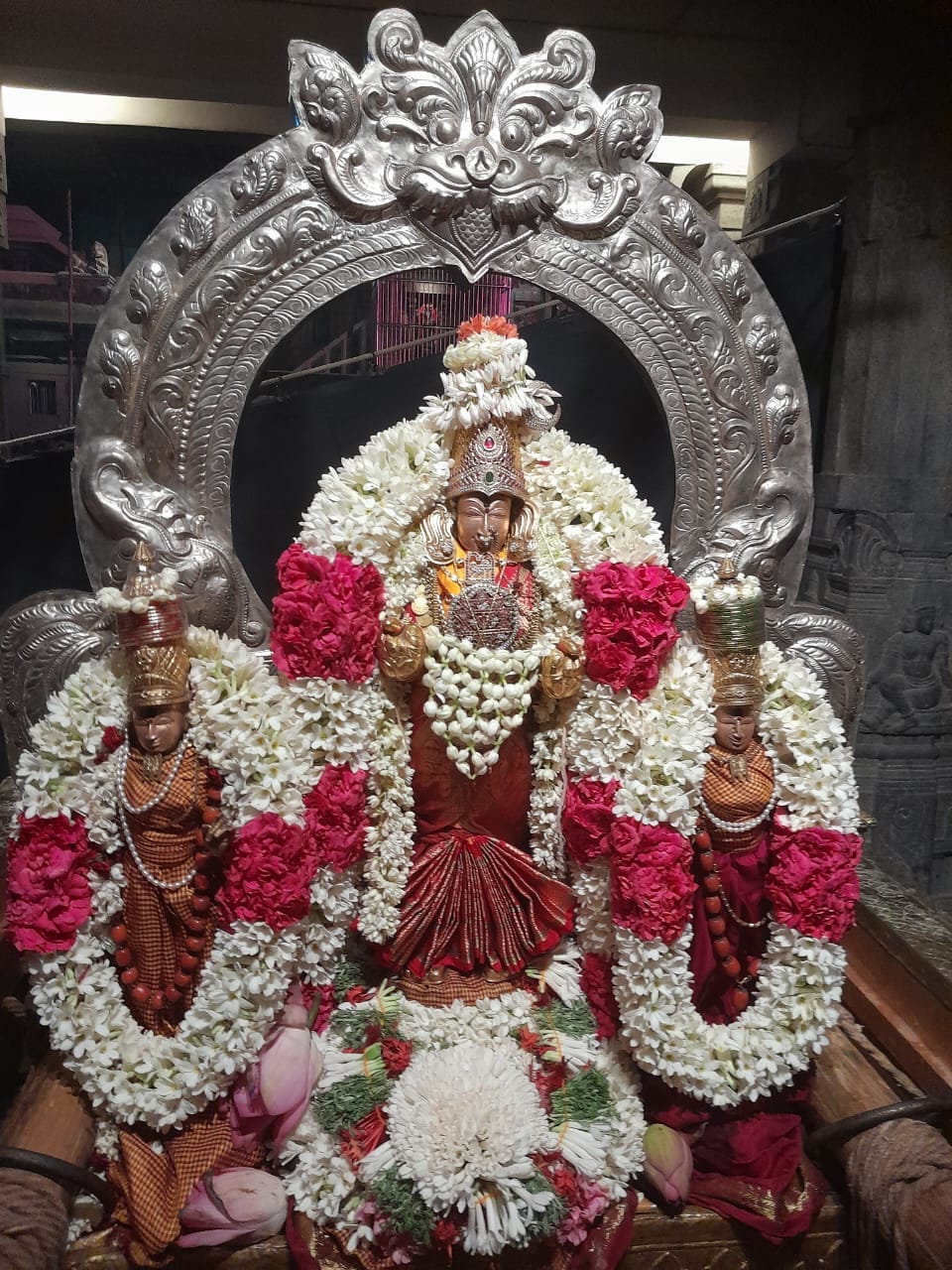
3. Samayapuram Mariamman Temple
The Samayapuram Mariamman Temple is a prominent Hindu temple located in Samayapuram village, near Tiruchirappalli (Trichy) in the state of Tamil Nadu, India. It is one of the most revered and popular temples in the region, dedicated to the goddess Mariamman, who is considered a powerful and benevolent deity in the South Indian tradition.

The Holy days for the deity are Sundays, Tuesdays, and Fridays, when thousands of worshippers flock to the temple. According to popular belief, Samayapuram Mariamman protects and heals her worshippers. Devotees make it a routine to acquire silver or steel replicas of various body parts and place them in donation boxes. Devotees also believe in presenting Maavilakku (a lamp constructed of rice flour, jaggery, and ghee).
Thai Poosam festival is celebrated in magnificent style for eleven days at the temple. In the month of Maasi, the temple celebrates the Poochoriyal Festival. Beautiful flowers are showered on the Moolavar deity during this event.
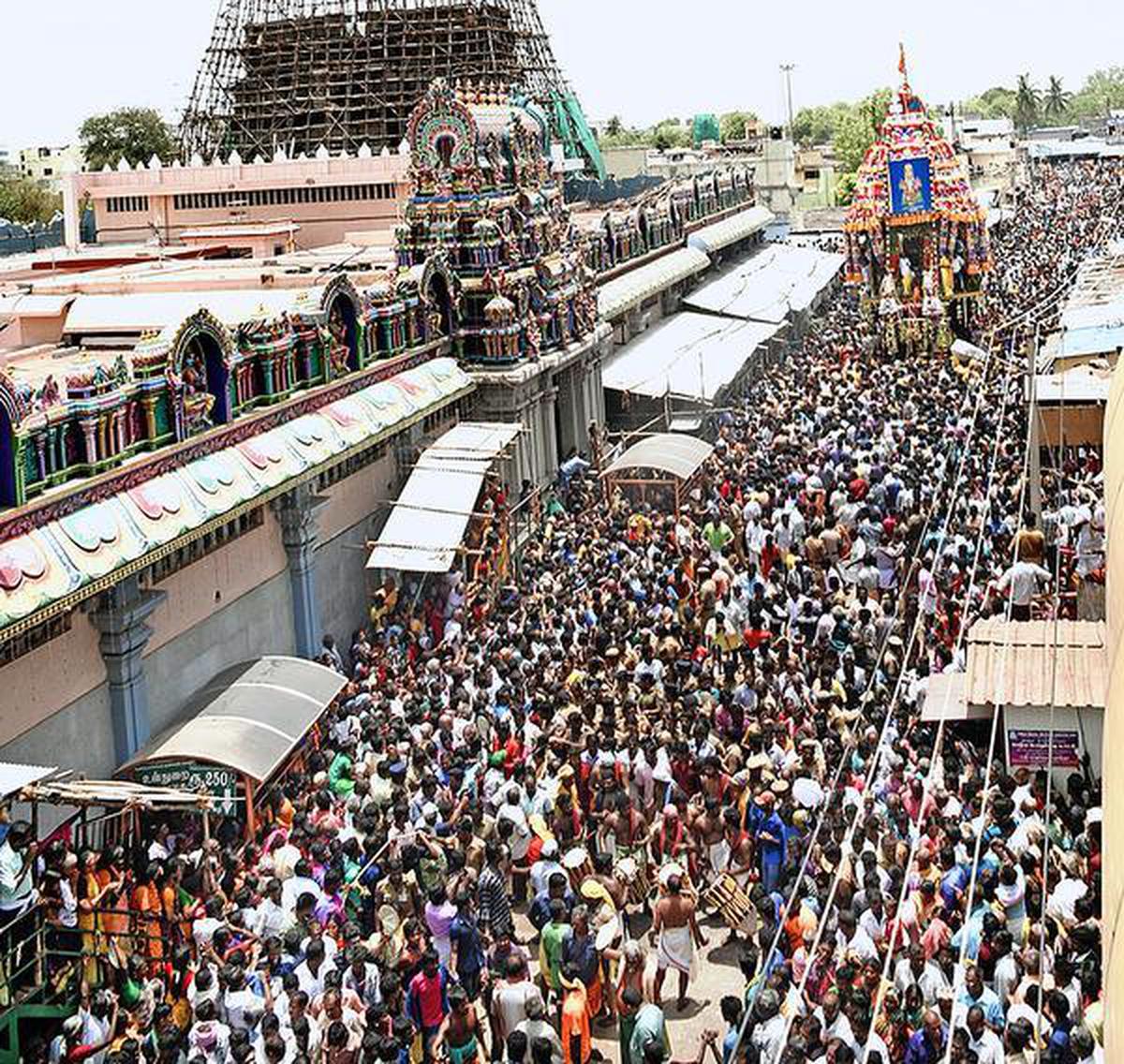
During the Chithirai-Panguni months, the Chithirai Ther (chariot) celebration is held. The Goddess rides a wooden chariot and rides on the Theppam (float) during the festival. Panchaprakaram is celebrated for 15 days throughout the months of Chithirai and Vaikasi. Maha Abishekam is performed on the first and tenth days. In the month of Purattasi, the temple celebrates the Navaratri festival as well.
Devotees who wish to visit this temple, Thiruchirapalli airport is the nearest to temple for air transport. Whereas for land transport, there is Thiruchirapalli railway station and there are buses and taxis which are convenient.
4. Chamundeshwari Temple, Mysore
The Chamundeshwari Temple is a famous Hindu temple located on the Chamundi Hill in Mysore, Karnataka, India. It is one of the most important religious and cultural landmarks in the city and holds significant importance among devotees and tourists alike. The temple is dedicated to Goddess Chamundeshwari, an incarnation of Goddess Durga, who is believed to be the fierce form of Shakti (the divine feminine power). The temple is situated atop the Chamundi Hill, which is about 3,489 feet (1,063 meters) above sea level. The climb to the top of the hill involves a series of steps, and there is also a road for vehicles to reach the temple.
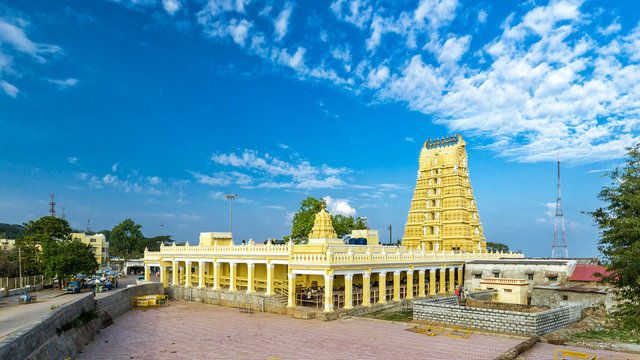
The 17th-century Chamundeshwari temple, built in Dravidian style architecture, contains a lavishly attired picture of the deity as well as a huge statue of Mahishasura near the entrance. : At the entrance of the temple, there is a colossal Nandi (sacred bull) statue carved out of a single black stone. This Nandi is one of the largest in India, measuring about 15 feet in height and 25 feet in length.
The temple celebrates several festivals with great enthusiasm. One of the most significant festivals is Navaratri, during which the Mysore Dasara festival takes place. Navaratri is a nine-day celebration dedicated to Goddess Durga, and the temple attracts thousands of pilgrims and tourists during this time.
5. Devi Kanyakumari Temple, Kanyakumari
Kanyakumari Temple, also known as the Devi Kanyakumari Temple or Bhagavathy Amman Temple, is a renowned Hindu pilgrimage site located in Kanyakumari district in the state of Tamil Nadu, India. Kanyakumari is the southernmost tip of the Indian subcontinent, where the Arabian Sea, the Bay of Bengal, and the Indian Ocean meet, making it a unique and significant place for pilgrims and tourists alike.

The temple is dedicated to Goddess Bhagavathy, also known as Devi Kanyakumari. She is considered a manifestation of the divine mother and is revered as the protector and bestower of blessings upon her devotees. The temple’s architecture showcases a blend of Tamil and Kerala styles. The sanctum sanctorum of the temple is situated overlooking the ocean. The gopuram (tower) of the temple is adorned with intricate carvings and vibrant colors.
To go to the temple, one can take a bus. This location is accessible by taxi or auto rickshaw! Kanyakumari bus station, located 1 km from the temple, is well connected to all important towns in Southern India. If you live in another region of the country, you may travel to the location through train. Regular trains connect this pilgrimage to the rest of the country.
Indeed, all these temples are worth your penny and religious trip! Add them to your bucket list and plan your holy trip!
Source: Cultural India
Follow us on Instagram, Facebook or Telegram for more updates and breaking news.


